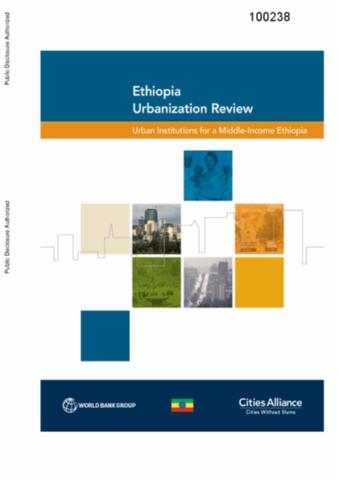The World Bank is a vital source of financial and technical assistance to developing countries around the world. We are not a bank in the ordinary sense but a unique partnership to reduce poverty and support development. The World Bank Group has two ambitious goals: End extreme poverty within a generation and boost shared prosperity.
- To end extreme poverty, the Bank's goal is to decrease the percentage of people living on less than $1.25 a day to no more than 3% by 2030.
- To promote shared prosperity, the goal is to promote income growth of the bottom 40% of the population in each country.
The World Bank Group comprises five institutions managed by their member countries.
The World Bank Group and Land: Working to protect the rights of existing land users and to help secure benefits for smallholder farmers
The World Bank (IBRD and IDA) interacts primarily with governments to increase agricultural productivity, strengthen land tenure policies and improve land governance. More than 90% of the World Bank’s agriculture portfolio focuses on the productivity and access to markets by small holder farmers. Ten percent of our projects focus on the governance of land tenure.
Similarly, investments by the International Finance Corporation (IFC), the World Bank Group’s private sector arm, including those in larger scale enterprises, overwhelmingly support smallholder farmers through improved access to finance, inputs and markets, and as direct suppliers. IFC invests in environmentally and socially sustainable private enterprises in all parts of the value chain (inputs such as irrigation and fertilizers, primary production, processing, transport and storage, traders, and risk management facilities including weather/crop insurance, warehouse financing, etc
For more information, visit the World Bank Group and land and food security (https://www.worldbank.org/en/topic/agriculture/brief/land-and-food-security1
Resources
Displaying 991 - 995 of 4907Domestic Emissions Trading
This document provides an overview and
summary assessment of lessons and insights learned from
various existing and presented domestic cap and trade
schemes. For each scheme, a set of general characteristics
(or issues) is considered. The characteristics (or issues)
covered include the following: (i) coverage and scope; (ii)
setting a cap; (iii) setting the points of obligation; (iv)
allocation of allowances; (v) systems for domestic
Romania - A Risk Analysis and Screening Approach for Climate Change Mitigation and Adaptation Options
The current report is a milestone for
preparing the Romanian climate change (CC) action plan. A CC
action plan should be based on the consolidation and
coordination of both mitigation and adaptation measures and
options. An important step in the elaboration of such a plan
is the selection of appropriate actions. This selection
requires the involvement of competent authorities in the key
sectors, including, in the case of Romania, transport,
Ethiopia Urbanization Review : Urban Institutions for a Middle-Income Ethiopia
The urban population in Ethiopia is increasing rapidly. If managed proactively, urban population growth presents a huge opportunity to shift the structure and location of economic activity from rural agriculture to the larger and more diversified urban industrial and service sectors. If not managed proactively, rapid urban population growth may pose a demographic challenge as cities struggle to provide jobs, infrastructure and services, and housing.
The Misallocation of Land and Other Factors of Production in India
This paper quantifies the misallocation of manufacturing output and factors of production between establishments across Indian districts during 1989-2010. It first distills a number of stylized facts about misallocation in India, and demonstrates the validity of misallocation metrics by connecting them to regulatory changes in India that affected real property. With this background, the study next quantifies the implications and determinants of factor and output misallocation.
Land Delivery Systems in West African Cities : The Example of Bamako, Mali
Urban and peri-urban land markets in rapidly expanding West African cities operate within and across different coexisting tenure regimes and involve complex procedures to obtain or make land available for housing. Because a structured framework lacks for the analysis of such systems, this book proposes a systemic approach and applies it to Bamako and its surrounding areas.







